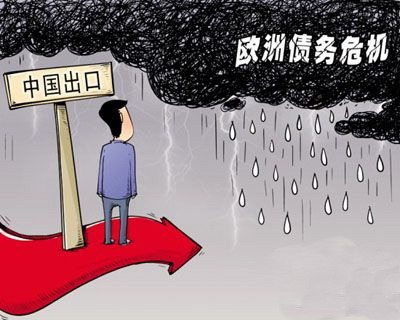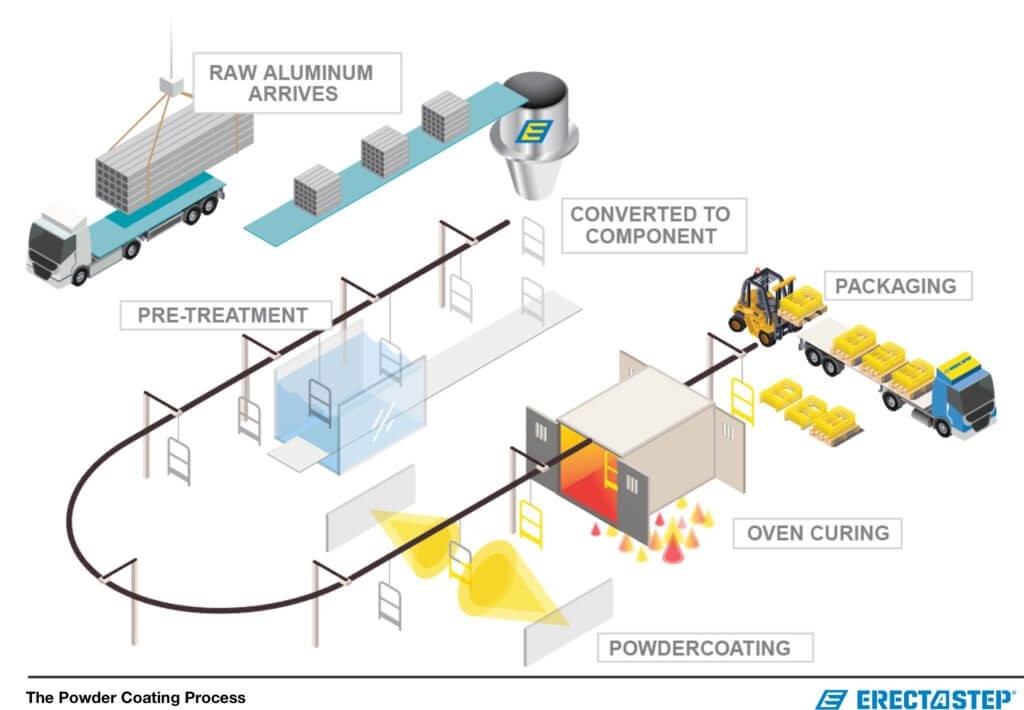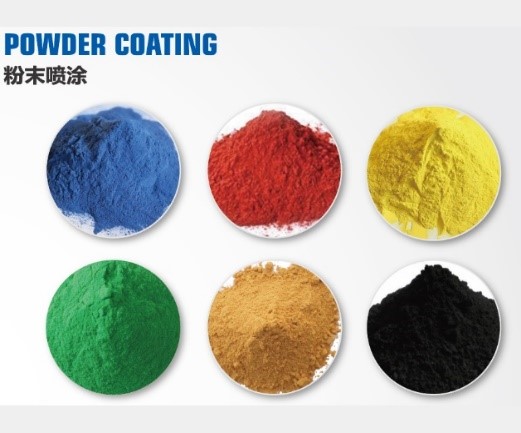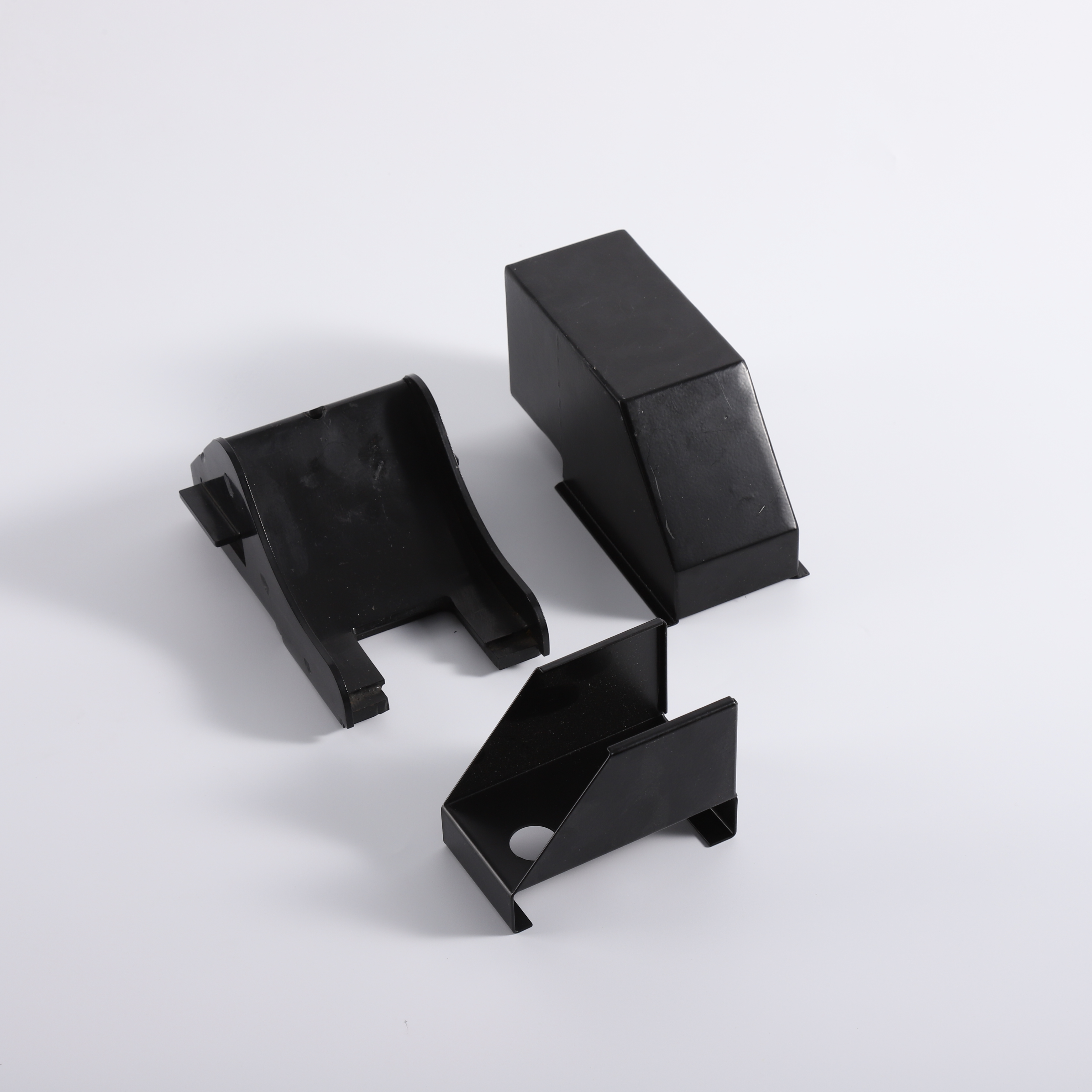Powder coating is a dry finishing process that has become extremely popular. Powder coating is used on a wide array of products. More and more companies specify powder coatings for a high-quality, durable finish, allowing for maximized production, improved efficiencies, and simplified environmental compliance. Used as functional (protective) and decorative finishes, powder coatings are available in an almost limitless range of colors and textures, and technological advancements have resulted in excellent performance properties.
Advantages over other coating processes
1. Environment friendly. Powder coatings contain no solvents and release little or no amount of volatile organic compounds (VOC) into the atmosphere.
2. More thicker coatings without running or sagging than conventional liquid coatings.
3. Perfect color consistency. Powder coated items generally have fewer appearance differences than liquid coated items between horizontally coated surfaces and vertically coated surfaces.
4. A wide range of speciality effects are easily accomplished using powder coatings that would be impossible to achieve with other coating processes.
5. Curing time is significantly faster with powder coatings compared to liquid coatings especially when using ultraviolet cured powder coatings or advanced low bake thermosetting powders.
Powder Coating Process
The Powder coating process involves three basic steps: raw material preparation or the pre-treatment, the powder coating application and curing.
Powder Coating Substrate Considerations
Before applying the powder coating material, you must first consider the substrate material that you will be coating. It is very important to have a clear understanding of the true composition of the surface of the part.
ALUMINUM:
ALUMINUM CASTING
COLD/HOT ROLLED STEEL
CAST IRON
BRASS
COPPER
ZINC
STAINLESS STEEL
Powder Coating Properties:
Coating Properties
Mechanical Properties
Pencil hardness GB/T 6739-1996 H-2H
Adhesion (cross-cut method) GB/T 9286-1998 Grade 0
Bending test GB/T 6742-1986 ≤ 2mm
Impact test GB/T 1732-1993 ≥50kg.cm
Cupping test GB/T 9753-1988 ≥7mm
Corrosion Resistance
Salt spray test GB/T 1771-1991 >500 hours,
no change, crossion width at crossing ≤ 2mm
Damp heat test GB/T 1740-1979 >1000 hours,
mild loss of gloss
Temperature resistance 100°C/48 hours, excellent gloss retention
Powder Coating Colours
RALAL Range, Pantone Range, and other Natural Colour Systems (NCS)
If you have a Powder Coating Colour requirement that we do not stock we are usually able to source powders from the above ranges within 48 hours.
Powder Coating Gloss Level
Gloss is measured as a percentage.
1. Matt Powders are between 20% and 30% gloss.
2. Semi-gloss Powders are usually around 60-65% gloss.
3. Gloss Powders at least 80% and can be 85%.
Powder Coating finishes
1. Textured Powder Coating:
2. Ripple/Leatherette Powder Coating.
3. Hammerite Finish Powder Coating.
4. High Temperature Powder Coating.
5. Anti-Bacterial Powder Coating.
6. Clear or Tinted Powder Coatings.
Application Field
1. In automotive applications:
a) some primers used on bodywork have converted to powder. This has given improved coating quality and provided ecological advantages.
b) where a functional as well as a decorative finish is desirable powder coatings are being used increasingly eg.
i. - wheels,
ii. - bumper bars,
iii. - mirror frames,
iv. - oil filters,
v. - battery trays,
vi. - coil springs and
vii. - heads.
2. Appliances
a) Specially formulated, hard and scratch resistant powder coatings are replacing the energy-intensive porcelain finishes on washer tops and lids.
b) Powder coatings are being used on range housings, freezer cabinets, drier drums, and microwave oven cavities.
c) Outdoor furniture, farm and garden implements and garden tractors also are being finished with powder coating materials. - Interior fluorescent light reflectors are coated using a highly reflective, very thin powder coating.
d) Exterior lamp housings on highway and parking deck fixtures are coated with specially formulated powder which give ultra violet light protection and added corrosion protection
Powder Coating,Custom Powder Coating,Metal Powder Coating,Powder Coating Services Suzhou FCE precision electronics Co., LTD , https://www.sjfukeyifcesz.com As the European debt crisis continues to ferment, the European automobile market has also been pushed into the quagmire.
As the European debt crisis continues to ferment, the European automobile market has also been pushed into the quagmire.
A number of European automakers have been pessimistic about the 2012 auto market and are expected to drop by about 10%. The latest survey results from Gasgoo.com show that Chinese cars with low prices, improved quality and improved brand image are expected to use this opportunity to open the European market.
European automotive market fell by more than 10% in 2012 On December 2nd, executives from major automakers in Europe gathered at the headquarters of the European Automobile Manufacturers Association in Brussels, the Belgian capital, and called on EU leaders to issue effective solutions as soon as possible to respond to the European debt crisis. However, European politicians did not seem to find effective measures to curb the debt crisis in Europe, and the most affected European auto industry is bound to continue to slump.
According to the Gasgoo.com survey, only 8% of the 1993 valid voters believe that the European debt crisis will not lead to a significant decline in the European auto market in 2012, given the possible impact of the European debt crisis on the European automobile market. In contrast, up to 46% of people believe that the European automobile market will experience a decline of around 5% to 10%, and even 30% of people will increase this decline rate to more than 10%, in addition to the decline rate of 5 % of people within the % also accounted for 16%.
The British LMC auto consulting agency also gave a prediction some time ago: In 2012, the new car market in Western Europe will experience a more serious decline than expected. In view of the continuous decline in the European economic output value, the agency has adjusted its expected decline in the European automobile market in 2012 from the original 2% to 5.1%. The Fiat and Chrysler Group CEO Malchone also believes that the Italian auto market has not been so weak since the 1980s and that 2012 will be a "difficult" year.
In fact, with the further expansion of the European debt crisis, the real economy has been affected, and many European auto companies have begun to cut production and cut costs to survive this difficult period.
Volvo, the world’s second-largest truck manufacturer, announced on December 6 that due to declining demand, it will shorten the working hours of the employees of the Renault plant that it is contracting for. Volvo spokesman Marten Wikforss stated: "We expect the European market to decline by 10% in 2012, and accordingly we will adjust accordingly."
In addition, as a car company affected by the debt crisis in Europe, PSA Peugeot Citroen has also planned to lay off 3,500 people in 2012. Fiat decided to reduce the European production capacity in 2012 by 300,000 units. The former’s European market share from January to October From 13.4% to 12.6%, the latter fell from 8% to 7.1%.
Wang Jianlin, deputy general manager of the Great Wall Motor International Department, said in an interview with the "First Financial Daily" that the European debt not only has an impact on the automotive industry, but also has a significant impact on the global economy. “The impact on the European debt crisis is not yet fully realized. It is estimated that the impact will be even greater next year.â€
China's car companies or the biggest beneficiaries, however, the European debt crisis hit the European market at the same time it is an opportunity for other auto makers.
In the survey, 23% of the voters believed that after consecutive earthquakes, tsunami and other natural disasters, as well as large-scale recalls, Japanese cars with a rising momentum could recover the downward trend of the overall decline, regaining a European debt crisis; And two percent of people believe that the European debt crisis has a direct positive effect on the Korean cars such as Hyundai-Kia that have risen strongly in recent years; another 11% believe that American cars driven by GM and Ford will be able to take advantage of the European mainland. Strong competitors are struggling to overcome difficulties during the European debt crisis; the most noteworthy is that up to 30% of voters believe that auto manufacturers in emerging markets such as China will become the biggest beneficiaries of the European debt crisis.
“European debt crisis is good for Chinese auto companies. Recently, large-scale distributors in countries including the United States, Italy, and the United Kingdom have taken the initiative to contact us. If our products can meet the technical requirements of European local regulations, they are willing to The European market sells our products.†Wan Xujun, deputy general manager of Foton Motor’s Overseas Business Department, told reporters that due to the high local production costs in Europe, the cost-effectiveness of Chinese-made cars will become an advantage as the European debt crisis continues to expand. Open a strong fulcrum in the European market.
At present, Foton Motors exports in Russia, Turkey, Ukraine and other Eastern European countries. Among them, the Occidental light-coloured product Omar has already obtained the EU product certification and is expected to achieve sales at the beginning of next year and at the latest by next June. And its European headquarters invested in Russia has also been put into operation for more than a year.
The Gasgoo.com analysis shows that in several major emerging economies in the world, Brazil and Russia’s local auto industry are weak, and the export to the European market is far from being considered at the strategic level. Although the automotive industry in India has improved, it is mainly supported by the Tata Group. The existing automobile export business is mainly carried out by Maruti Suzuki, which is controlled by Suzuki Corporation of Japan. Therefore, several major emerging economies can export to the European market. China's native car brand manufacturer.
“When the debt crisis in Europe further expands and people’s purchasing power is relatively declining, Chinese auto products with higher cost performance may be more likely to be favored by consumers in the European market.†Wang Jianlin, who is familiar with the European market, believes.
However, in the face of the “momentum†of European debt, Wang Jianlin believes that the European market is a relatively difficult market for Chinese cars as well as for Japanese and Korean cars. At present, Chinese cars are still laying the foundation for the export of Europe. The initial stage of the network.
In this regard, Wan Xujun agrees. "The European market is more often laid out as a strategic market. Therefore, we have always invested a lot of resources from talent pools to product development. However, the current progress is not very fast, and more is still laying the foundation."
However, Cui Dongshu, deputy secretary-general of the National Association of Passenger Vehicles, believes that at present, China's auto exports to the European market are few, and the European debt crisis has no direct impact on Chinese autos. The key to the auto market in China is still domestic policies.
In addition, more than 35% of the respondents believe that in the context of economic globalization, the scope of the European debt crisis will continue to increase and the degree will deepen, which will force large-scale enterprises in some countries in the EU to strip profitability to some extent. Relatively weak or even loss-making assets will provide powerful Chinese auto makers with the opportunity to retire and participate in the global restructuring of the automotive industry.
However, Wan Xujun said: "Most European companies are operating more steadily. The European debt crisis is caused more by the rapid expansion of the EU community. It is a problem at the national level, rather than the company's own operating problems. Therefore, the European debt crisis has led to autos. The possibility of a business failure is not great."
Given that the recent acquisition of Saab was in a deadlock, industry insiders also suggested that domestic automakers could pay more attention to some European parts and components companies with certain technical and customer resources. They must conduct due diligence and combine due diligence before the acquisition of vehicle companies. To make objective judgments on its own "digestive" capabilities and development strategies and avoid entering the acquisition trap.


